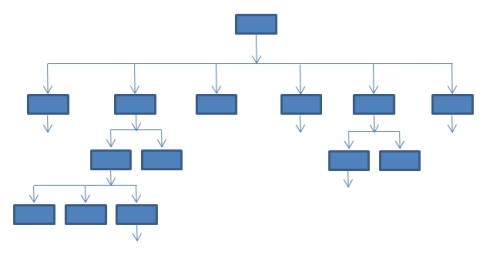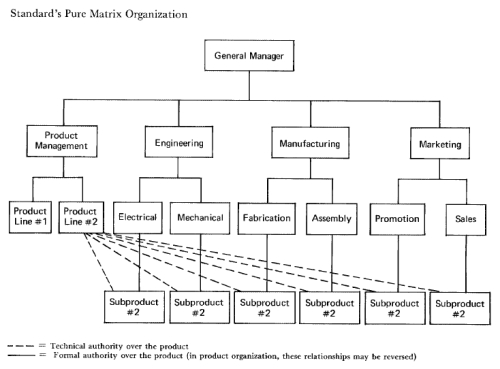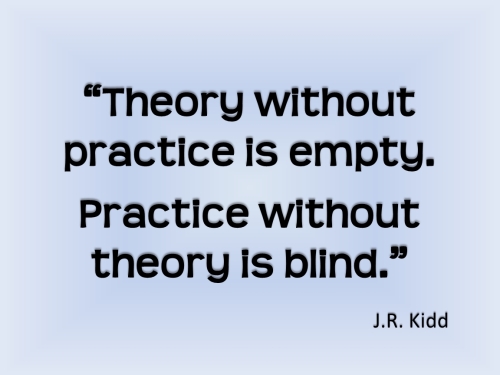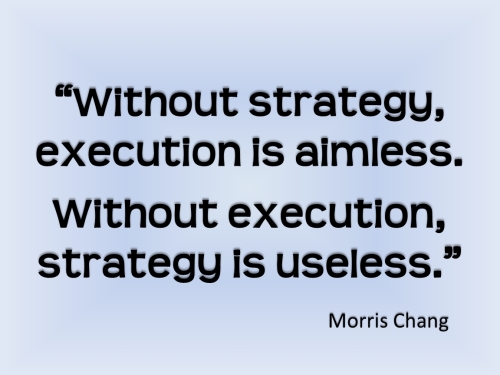What is the future of school libraries – school librarians? That is the core subject of a new “crowd-sourced” eBook edited and self-published by Kristin Fontichiaro and Buffy Hamilton using Smashwords. The eBook is available in several eReader formats including PDF.
According to the authors’ Introduction;
It’s undeniable that the number of certified school librarians is on the decline just as it’s equally undeniable that the explosion of digital resources – in parallel with existing print resources – means students and classroom teachers need more support than ever before.
…
What is the future of school libraries? More particularly, what is the future of school librarians? At the present time, libraries aren’t being closed in schools; librarians are the loss leaders.For those of us still working in schools, what are we working toward? For those of us sent back into classrooms or other professions to await a better future, like Eastern European partisans waiting in the forests for rescue after Soviet Occupation, what would life after liberation look like? Both are valid and valuable questions.
Those are some of the question we posed to the extended school librarian community. What is the future going to be like? What do you see? What can you hold up from your own practice as a lantern to illuminate the way for others? These questions are too big to be answered by any single librarian, district, organization, or task force. They take collective thinking.
The monumental questions regarding the future of a profession are certainly best answered by those within that profession, and so the authors did what every good librarian would do in the 21st Century environment of social networking and technology – they asked their colleagues for perspective, and published the results in an open format. What they hoped to achieve was to find out; “What new inspirations could we gain from one another? What new questions might arise? What might help us gain strength and inspiration from one another, even as our roles and duties expand and our job security and salaries decrease?”
With input from over 50 librarians from all quarters and career perspectives, as well as some non-librarians too, the editors organized the content into the following chapters.
-
1: Learners
2: Who And When We Teach
3: Emerging And Multiple Literacies
4: Gaming
5: Reading
6: Physical Libraries
7: Virtual Libraries
8: Collection Development
9: Collaboration
10: Professional Learning
While there was no summary or attempt to synthesize the input from contributors, that is not a fault of the work, but I assume, a clear recognition of each contributor’s perspective and opinion standing on its own merit. Overall, it is an interesting and worthwhile work that should contribute to the school librarian profession today.
Some of the more notable input from contributors included the following excerpts.
I began my career in education as a technology instructor but later moved into libraries because I saw that the librarian tapped into the enduring core of what a strict focus on technology could only circle around with its endless stream of upgrades, inventions, and applications. I saw the skill my students needed was to be able to construct meaning and communicate effectively with any tool that happened to be at hand. The tools and media formats are constantly changing, but the processes involved and the habits of mind engaged remain the same.
…
I have sometimes heard my colleagues described as “more than librarians” or “not really librarians” because they do so much more than hand out books. But “librarian” is not a misnomer for those who embrace collaboration, adapt to new technologies, and serve as leaders in schools.
…
All these children will be held to the same rigorous standards. Teachers will be scrambling to locate appropriate support materials that allow them to scaffold instruction. Teachers will need to ensure that every student has access to foundational background knowledge that levels the playing field. Teachers will need differentiated material that explains and reinforces fundamental academic vocabulary. Teachers will need multiple reading selections that reflect increasingly sophisticated text complexity for all students, no matter their starting point. These challenges present unique opportunities for school librarians to strut our prowess in finding engaging and accessible information resources.
…
To meet the needs of our 21st-century learners, we have to think like THEM! How do we do that? By providing engaging, high-interest connections designed to awaken prior knowledge and linking it to the research ahead we will jump-start the creation of new, authentic, and globally-shared knowledge.
It’s easy: keep your finger on the pulse of what is happening now in the lives of teens. What is important? Grabs their attention? Makes them wonder or laugh? Frightens them? In many cases, answers can be found by tapping into the world of social media and pop culture.
…
Our library program uses tweets, podcasts, movie trailers, television commercials, music videos, blogs, and more to connect students to the inquiry process. High-interest introductions can awaken prior knowledge and set the stage for engaging, participatory learning. Capture your students’ attention from the start.
…
AnyQuestions.co.nz (and its companion sites UiaNgāPātai.co.nz and ManyAnswers.co.nz) is a free online reference service for New Zealand school students. The service is staffed by friendly librarians from around New Zealand and is funded by the Ministry of Education to provide information literacy skills. Operators don’t find information for students but rather assist students in developing information literacy skills so they can find the information for themselves. The service exists to supplement the great work that school librarians do already, and since 2005 the service has helped over 80,000 New Zealand school students.
In many ways AnyQuestions is the future of librarianship, a decentralized service that students access as and when they need.
Yet many AnyQuestions operators are uneasy in this space. There is a definite sense that the online environment is a space where students have the power. ….
Of course this argument that the students have the power is fundamentally flawed. Students log on to AnyQuestions.co.nz because they don’t have the skills to find the information they are looking for, skills which the librarian does have.
…
One of our [librarian and teacher] most successful collaborations was with a group of senior students studying genetically transmitted diseases. Traditionally, this project would have been a fact gathering mission that amounted to cut-and-paste with little evidence of real engagement or learning. We brainstormed ways of delivering the information gathering process that would increase student engagement and make the learning more personal. Eventually, we decided to put the students in groups of five, assigning the following roles: a person with the genetic disorder; the parent who had passed on the gene; a medical professional; a sibling who did not have the gene; and a presenter who would interview the others on video.
…
Seek out that special teaching practitioner. Look for a teacher with experience and a willingness to work collaboratively, a teacher who is looking for a new challenge. Avoid the brand new enthusiast, who will likely be overcome by the challenges, and in particular, avoid the jaded. If you select well and execute with grace and precision, this teacher will likely become your strongest advocate. Nurture this teacher; your future may depend on it.
…
The future librarian is an instructional leader and partner who works with teachers and administrators to build school-wide collections that are accessible beyond the walls of the library and that defy traditional delivery methods. She builds a library presence centered around both physical and digital spaces for conversation, creativity and collaboration. She and her students blog, Tweet, and share their work in collaborative online spaces.
The future librarian embraces social media and uses it to build a bridge between students, teachers and the world. She understands that in order to meet student needs, the library must be accessible anytime, anywhere. The future librarian is creative, flexible, and willing to do whatever it takes to engage students. He is an active member of personal learning networks and, what’s more, he thinks reflectively about what make learning joyful and exciting for him. Then he applies those lessons to the library. The future librarian provides opportunities for wonder and experimentation. He promotes reading for pleasure and learning through play; this librarian knows that all instruction must be both relevant and riveting.
The time for the future librarian is now. Though we live in exponential times, the world of education has struggled to keep up. For school librarians, there has never been a time of greater uncertainty or opportunity. As what it means to educate the 21st-century learner evolves, school librarians have the opportunity to claim our place as instructional leaders in this new educational landscape. [Emphasis added.]
…
One such [pivotal teaching] moment occurred for me more than a decade into my teaching career and was sparked off by my involvement in the online digital novel Inanimate Alice. Written for, and specifically to be read and viewed from the screen, Inanimate Alice represents a radical shift to the transmedia universe. Designed from the outset as a story that unfolds over time and on multiple platforms, ‘Alice’ connects technologies, languages, cultures, generations and curricula within a sweeping narrative accessible by all.
…
For me, Inanimate Alice represents a paradigm shift in how I approach education in the 21st-century. Through the power of transmedia storytelling, I am able to take what might otherwise be a one-dimensional task for some of my learners and turn it into a fully immersive and multi-dimensional experience for all.
…
[The] skills of discernment are in greater demand now than ever before, due to students’ unprecedented access to an unprecedented flood of information. Now the greatest commodity is not the information itself but the distinct ability to synthesize and contextualize it, to turn it into useful, practical knowledge.
School librarians—through Dewey, Bloom, and by other means—have always helped create order in the world as well as a context for learning and reading. Now they must work to apply these critically important skills to the next content wave: the emerging tide of Apps and other new streams of e-content on the verge of becoming ubiquitous.
…
[W]hy isn’t the library the largest tinkering space in the school? Why in a project based environment isn’t the hub of activity located in the library? It could so easily be a large open space with mobile resources forming constellations around working students. Tables where 3D models are built can cluster with tables supporting wireless laptops. Print resources on wheels can parallel park next to those tables. And the whole project could have been diagramed and dissected into peer accountability with a mobile whiteboard and chairs pulled into an open space….
…
[A]s budgets tightened the Napa Valley School Library Consortium began to experience the elimination of funding that purchased valuable student print and digital resources. The city county public library systems and the consortium member school districts began to collectively explore different ways to provide much needed services. The NVSLC, the Napa City County Library, and the independent St. Helena Public Library formed a valuable partnership to make available student resources that were beyond the NVSLC’s funding capabilities The result of this collaboration has been to define the student library card or instant eCard as the point of entry to access public library resources.
…
In addition to those high school English or history classes that introduce critical thinking skills, it is the librarian who takes critical thinking development further in prepping their students for the rigors of academic writing that include the essentials of Boolean searching, how to read a scholarly article, how to effectively use citation tools, and more.
…
Whether through membership in a national, regional or state association, collaborative/consortium, wiki, subscription to a listserv or blog, or participation in a social network like Twitter, Facebook or LinkedIn, there is a need for us to find and connect with one another as professionals committed to continuous improvement of our work. I can’t imagine that this need will change though I do imagine that the ways in which we do connect may be very different. In the here and now, know that I can get frustrated at the seeming stodginess of our more venerable associations and the bylaws and traditions that seem to get in the way of providing a rapid response to address compelling needs or just get necessary work done in a timely fashion. [Emphasis added.]
An appropriate quote on which to end! If you are a school librarian, you will want to use this resource.










